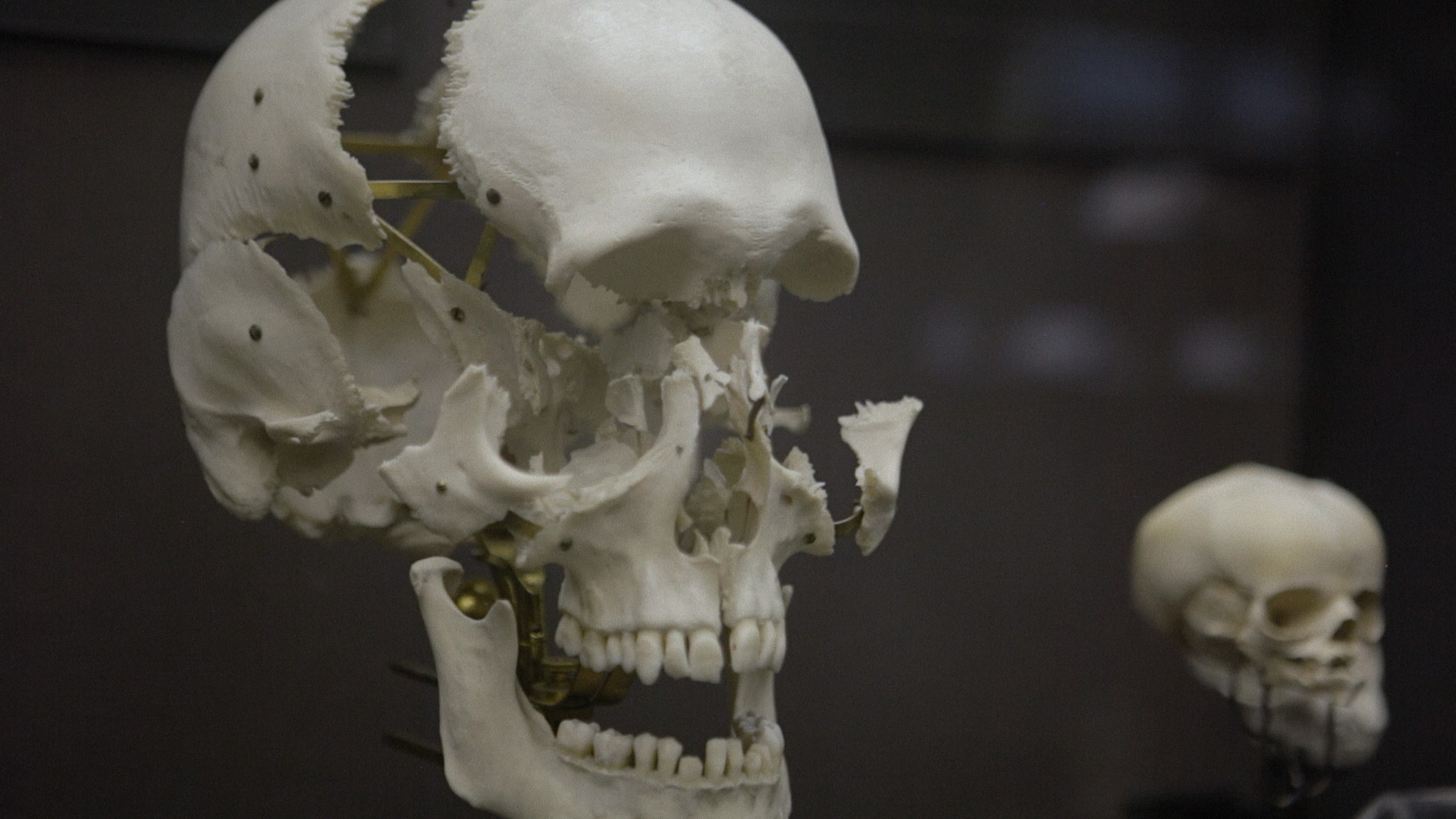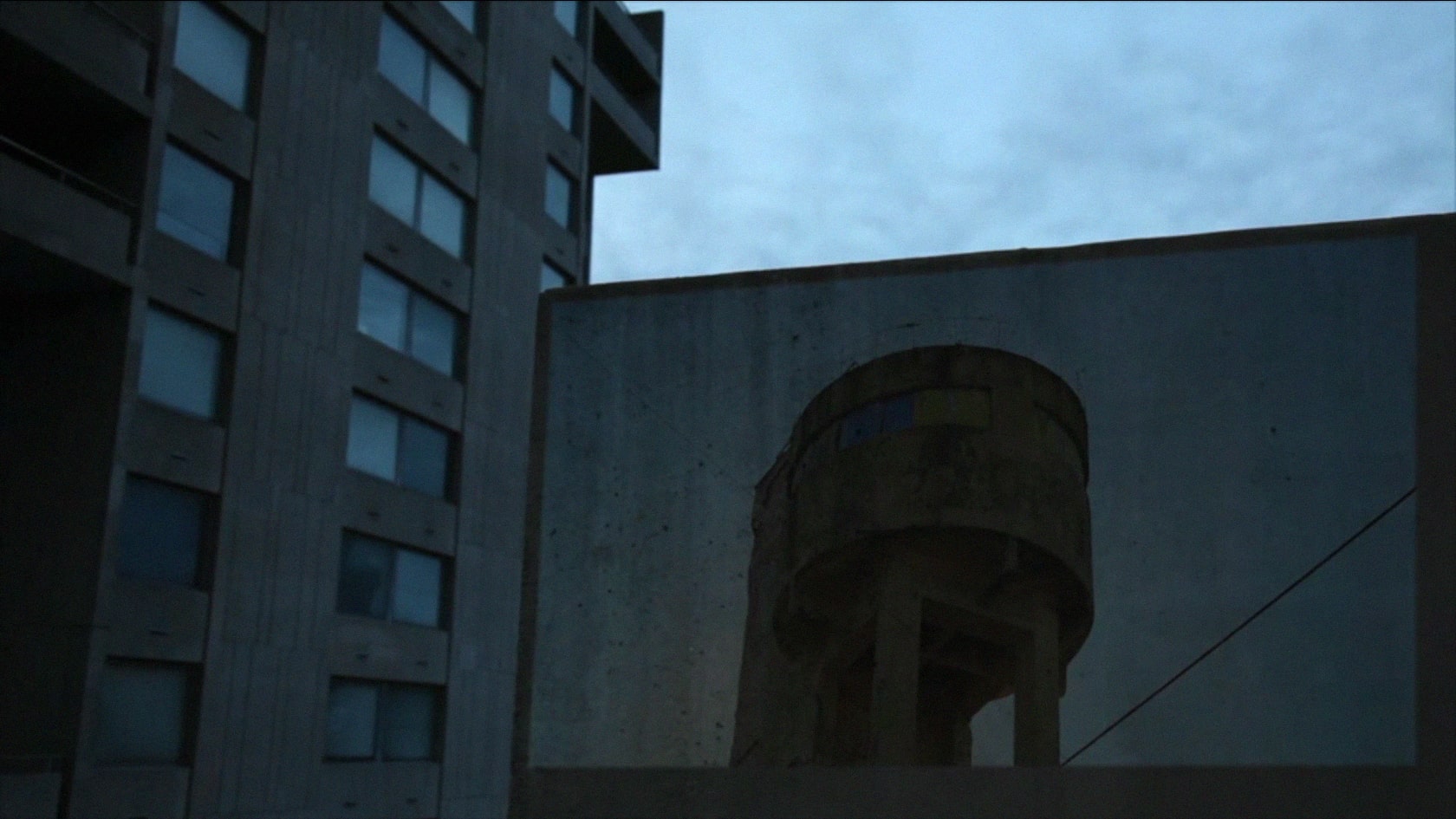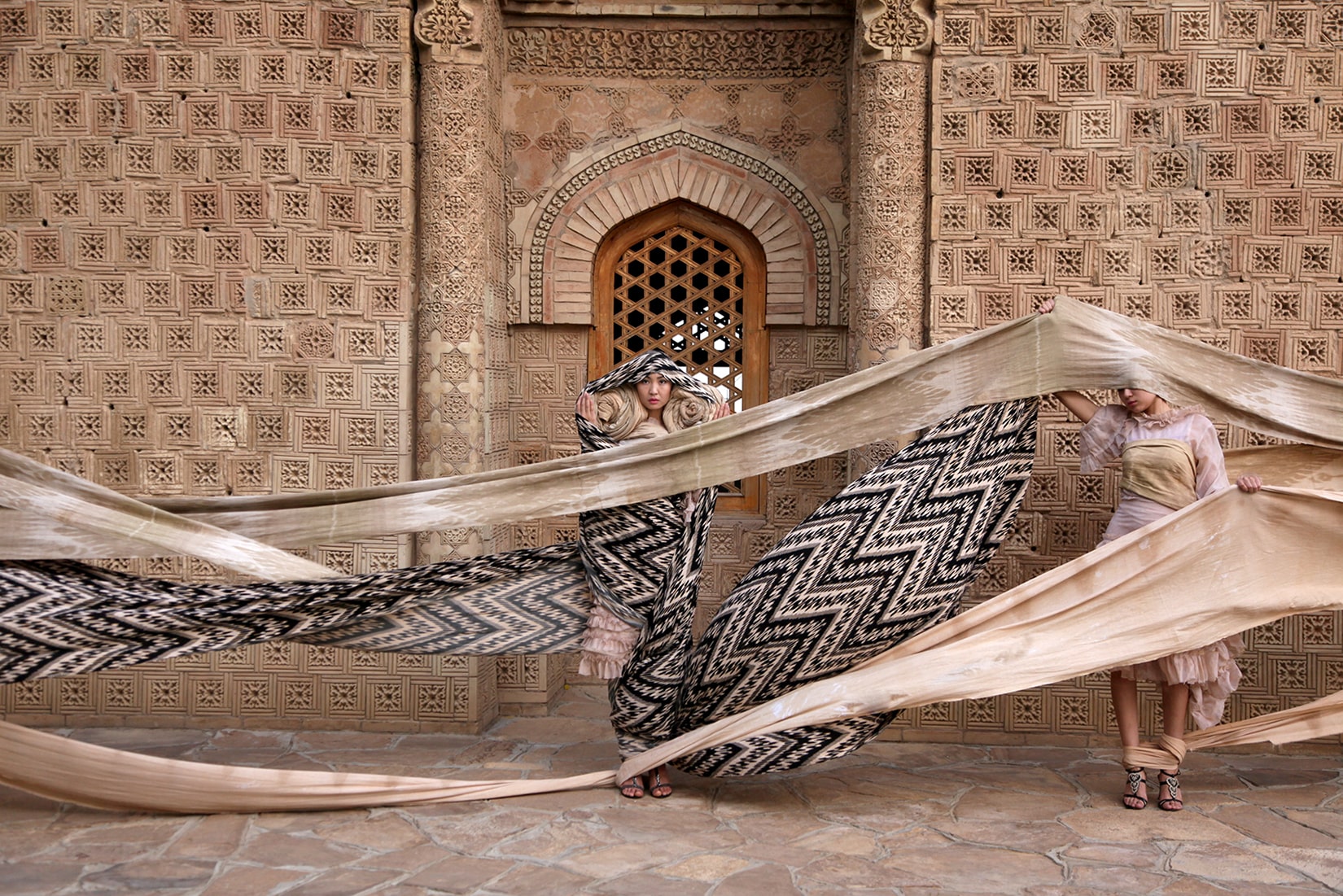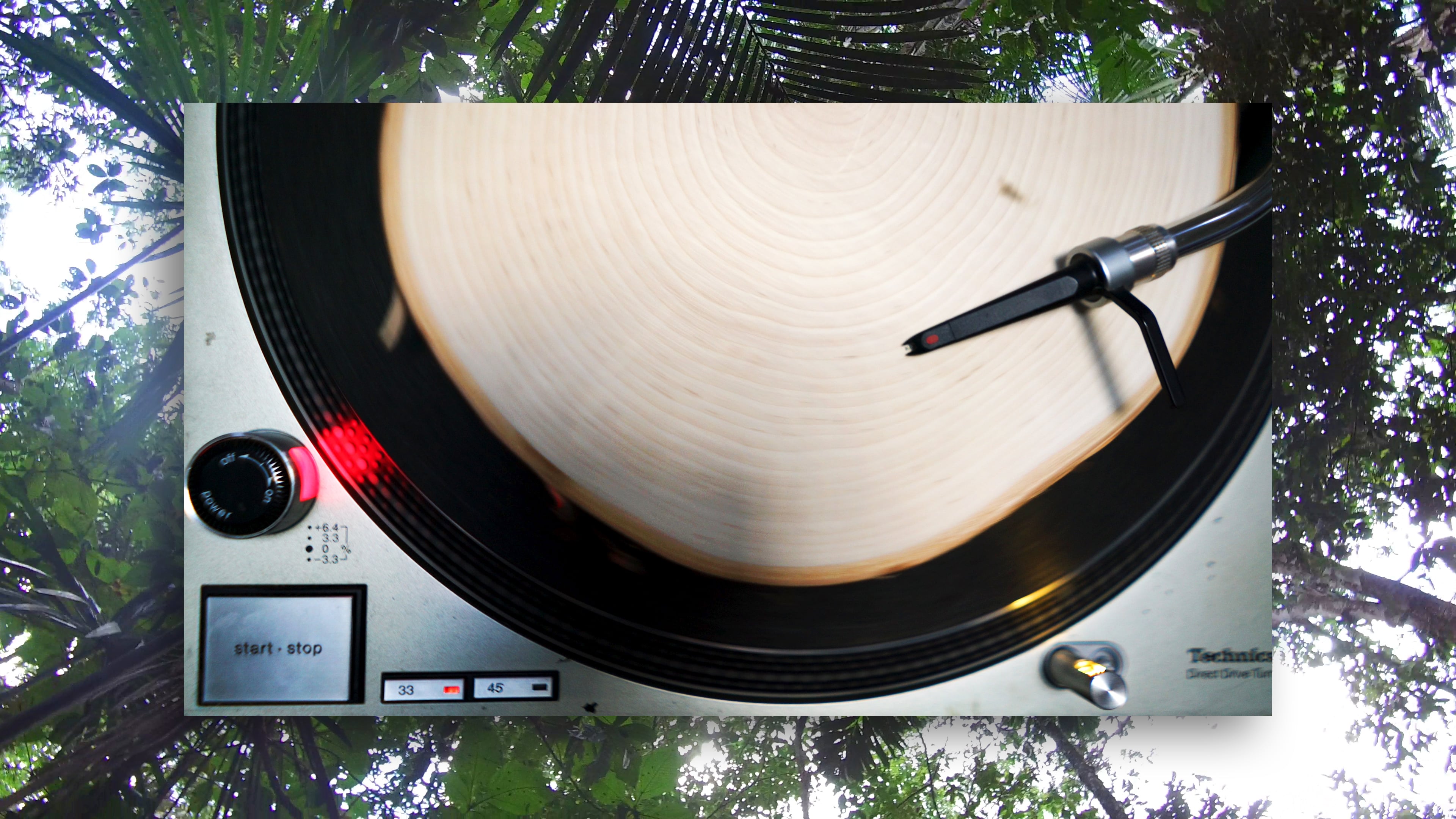Works by:
Anton Vidokle / This is Cosmos, 2014
Anton Ginzburg / Constructivist Drift, 2016
Olga Tobreluts / The Manifest of Neoakademism, 1998
Polina Kanis / Formal Portrait, 2014
Sid Iandovka, Anya Tsyrlina / Horizōn, 2019
Almagul Menlibayeva / Butterflies of Aisha Bibi, 2010
Alexandra Lerman / Tree Time, 2019
Between myth and reality
At the turning-point of eras, new philosophical and aesthetic narratives are born. Their adepts and heralds are artists and scholars who are sensitive to the fabric of time and create myths. There is a rich tradition of myth-making in Russian art in the post-Soviet space: Moscow conceptualism, pirate television, neoacademism, necrorealism, medical hermeneutics. Today, Russian and American artists appeal to the study and mythologization of global layers of civilization: to the classical heritage, the ancient epic, the avant-garde, ideas of Russian cosmism and urbanism, ideology, gender and mass-media. This program gives a cross-section of significant works connected with the philosophy of Russian cosmism of Anton Vidokle and the mythology of neoacademism of the pioneer of media art Olga Tobreluts, to computer experiments and new artistic practices of perception through non-anthropocentric awareness.
This video program presents the cult film for Petersburg culture, “The Manifest of Neoakademism” (1998) inspired by the founder of the movement Timur Novikov. The author of the film is Olga Tobreluts (Russia), a pioneer of media art in Russia. The work of Anton Vidokle (USA) studies the roots of the phenomenon of Russian cosmism. Anton Ginzburg (USA) projects masterpieces of constructivism and urbanistic theses from the 1953 treatise by Ivan Shcheglov. Almagul Menlibaeva (Kazakhstan) turns to the national epic and through it conveys the gender ideas of our times. Alexandra Lerman (USA) models perception of nature through the consciousness of trees. Polina Kanis (Russia) reveals the frustration of ideological rituals through performance.
Anton Vidokle
This is Cosmos, part 1 of a film trilogy on Russian cosmism, “Immortality for All”, 2014
28:10, HD Video
Today the Russian philosophy known as Cosmism has been largely forgotten. Its utopian tenets – combining Western Enlightenment with Eastern philosophy, and Russian Orthodox traditions with Marxism – inspired many key Soviet thinkers before they fell victim to Stalinist repression. In this three-part film project, artist Anton Vidokle probes how Cosmism influenced the 20th century and suggests its relevance to the present day.
Shot in Siberia and Kazakhstan, as well as the Moscow and Arkhangelsk regions, the first film in the trilogy on Russian Cosmism comprises a collage of ideas from the movement’s diverse figures, including founding philosopher Nikolai Fedorov. Fedorov, along with other thinkers, believed that death was a mistake — a flaw in the overall design of the human being, “because the energy of cosmos is indestructible, because true religion is a cult of ancestors, because true social equality is immortality for all.” For the Russian cosmists, the definition of cosmos was not limited to outer space: rather, they set out to create “cosmos,” or harmonious and eternal life, on Earth. The ultimate goal, as illuminated in the short film, was “to construct a new reality, free of hunger, disease, violence, death, need, inequality — like communism.”
Anton Vidokle is an artist and the editor of e-flux journal. He was born in Moscow and lives in New York and Berlin. Vidokle’s work has been exhibited internationally at Documenta 13 and the 56th Venice Biennale. Vidokle’s films have been presented at Bergen Assembly, Shanghai Biennale, the 65th and 66th Berlinale International Film Festival, Forum Expanded, Gwangju Biennale, Center Pompidou, Tate Modern, Garage Museum, Istanbul Biennial, Haus der Kulturen der Welt, Tensta Konsthall, Blaffer Art Museum, Stedelijk Museum, and others.
Anton Ginzburg
Constructivist Drift, 2016
05:00, HD video, sound
“Constructivist Drift” is based on a work by Ivan Shcheglov, “Formula for a New Urbanism”, 1953, a poetic manifesto published by Situationist International as a response to the advancement of Modernism, and its confrontation with the human dimension of the city. Video footage is projected onto a concrete wall. It superimposes passages from the “New Urbanism” text with contemporary video recordings of Soviet architectural environments. The natural change of light that occurs throughout the film’s duration acts as a structural device. As twilight changes into the night, the brutalist buildings in the background become silhouettes and eventually disappear into the black screen.
Anton Ginzburg is a New York-based artist, born in 1974 in Saint Petersburg, Russia, known for his films, sculptures, and paintings investigating historical narratives and poetic studies of place, and post-Soviet identity. He earned a BFA from Parsons, The New School and MFA from Bard College, New York. His work has been shown at the 54th Venice Biennale, the Blaffer Art Museum at the University of Houston, Southern Alberta Art Gallery in Canada, White Columns in New York, and the first and second Moscow Biennales. His films have been screened at the Whitechapel Gallery in London, Rotterdam International Film Festival (IFFR), Dallas Symphony Orchestra (Soluna), Les Rencontres Internationales in Paris, and New York Film Festival/ Projections among others. antonginzburg.com
Olga Tobreluts
The Manifest of Neoakademism, 1998
04:00, DVD-video
In the late 1980s-early 1990s, a powerful aesthetic movement formed in the art world of Leningrad – neoacademism, involving experiments and introducing plastic images of classical sculpture and painting into the contemporary context, influencing all spheres of independent Petersburg art. In 1990, artists from the New Academy of Fine Arts made the first films in the neoacademism aesthetic. In 1994, Olga Tobreluts began working on computer video films. In 1998, she received the International prize for the film “The Manifest of Neoakademism” at a festival in Karlsruhe, Germany.
Olga Tobreluts
Acclaimed internationally as the pioneer of media art, has been one of the most crucial influences on the development of digital art in Russia. She was born in 1970 in Leningrad, Russia. She is active as a painter, photographer, sculptor and curator. After graduating in Computer Graphics from the Institute ART + COM in Berlin, Germany, she immersed herself completely in computer graphics, photography and 3D modeling. Then she took an active part in Neo-Academism as an artist and professor in the Department of New Technologies in the New Academy of Fine Arts from the moment of its foundation by Timur Novikov (1958—2002) in 1989. Her works are held in the following collections: The State Russian Museum, Saint Petersburg; MoMA, the Museum of Modern Art in New-York; the State Tretyakov Gallery, Moscow; the Museum of New Academy of Fine Arts, Saint Petersburg; the New Museum, Saint Petersburg; “Ekaterina” Fund, Moscow. Olga lives and works in Saint Petersburg.
Polina Kanis
FORMAL PORTRAIT, 2014
08:31, HD Video
The idea of the project is to reexamine the culture of parades and mass processions as one of the most powerful ideological instruments. The ritual of raising a flag seems an attempt to demonstrate victorious strength in a dramatized, directed eternity, but it merely reveals the impotency of the action in place. The flag is raised in an enclosed, publicly unseen territory. Its ceremonial raising becomes a metaphor for a victory that will never come.
Polina Kanis was born in 1985 in Leningrad, where she studied at the Herzen State Pedagogical University before continuing her studies in Moscow at the Rodchenko Art School of Photography and Multimedia. In 2011, she was a Kandinsky Prize winner in the “Young Artist” category, and in 2016 she won the Sergey Kuryokhin Award for Contemporary Art in the “Best Media Object” category. Kanis has also won and been short-listed for various prizes in the Innovation awards for contemporary art. Solo exhibitions of Kanis’ art have been held at the 5th Moscow International Biennale for Young Art (2016), Manifesta 10 in St. Petersburg (2014) etc. She lives and works in Moscow.
Sid Iandovka, Anya Tsyrlina
Horizōn, 2019
07:35, HD video
“An unremarkable random 70s newsreel from the artists’ hometown in Soviet Siberia forms the substrate for a relentless exploration of the representational and narratological techniques: without ever collapsing into a “story” or abstraction, “Horizōn” recants the relationship between analog and digital, surface and reference, sense and experience, past and present” (Thomas Zummer).
Sid Iandovka, Anya Tsyrlina
Siberia-born visual artists with a background in electronic music and new media, whose current collaborative projects combine the structural and material concerns of experimental cinema with documentary and archival practices. Their moving image work has been screened at film festivals and venues, including International Film Festival Rotterdam (Netherlands), Viennale (Austria), Berwick Film & Media Arts Festival (UK), European Media Art Festival (Germany), VIDEOEX (Switzerland), Bildrausch (Switzerland), Moscow International Experimental Film Festival (Russia), and others. Sid Iandovka lives and works in New York, USA. Anya Tsyrlina lives and works in Basel, Switzerland.
Almagul Menlibayeva
Butterflies of Aisha Bibi, 2010
10:00
“This is an ancient love story of the Sufi poet’s daughter Aisha Bibi and Karakhan, the Central Asian version of Romeo and Juliet, visually transformed into a modern-day drama of unfulfilled longing, unconditional love and its underlying gender discourse, addressing a never-ceasing problematic synergy/symbiosis deeply rooted in the civilizations born between the elements of earth and sky” (Priska C. Juschka). Menlibayeva works thematically with the history and present- day reality of the new post-Soviet Kazakhstan and the fate of its indigenous people through the lens of the human condition and with a focus on spirituality, gender and ecology.
Almagul Menlibayeva
Born in Almaty, Kazakhstan. Video artist and photographer. She holds an MFA from the Art & Theatre University of Almaty, Kazakhstan. She has gained international recognition by participating in the 15th and 18th Sydney Biennale (Australia); the 51st, 52nd, and 53rd Venice Biennale (Italy); the 10th Sharjah Biennial (UAE); the 4th Moscow Biennale (Russia); the Arsenale 2012 (Ukraine), and the Mediterranean Biennale of Contemporary Art (Israel). Lives and works in Kazakhstan and Berlin, Germany. almagulmenlibayeva.com
Alexandra Lerman
Tree Time, 2019
03:08, Video 4K
Tree Time imagines a relationship between nature and technology unmediated by human presence. Shot by a drone in the Amazon rainforest the film depicts a point of view as disembodied as the AI-generated voices discussing a series of images of annual tree rings. These natural data-inscriptions record man-made ecological distress into the body of the tree just as humanity uploads the information it deems important for posterity into the cloud.
Alexandra Lerman
Born in 1980 in Leningrad, Russia. Artist. She holds a BFA from the Cooper Union School of Art (New York, USA) and an MFA from Columbia University (New York, USA). In her “projects-investigations” Lerman researches how human beings are affected by systems and ideologies that control the post-industrial world of immaterial labor and the human’s influence on the planet’s ecology. Her projects have been shown at Artists Space (New York, USA), Queens Museum (New York, USA), Whitney Museum of American Art (New York, USA), Signal Center (Malmö, Sweden), Manege Exhibition Hall (St. Petersburg, Russia) and “Contemporary Art in the Traditional Museum” festival by ProArte Foundation (St. Petersburg, Russia). Lives and works in New York, USA. alexandralerman.com





